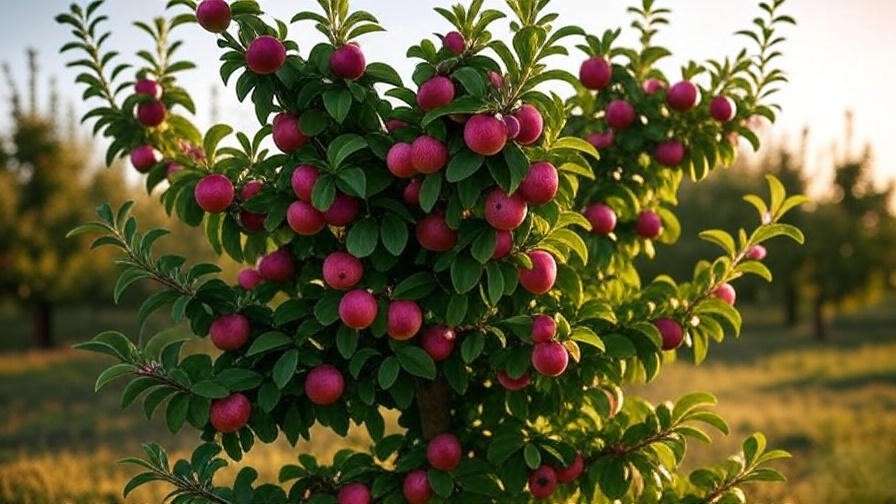Imagine biting into an apple that’s not only sweet and tart but also boasts a stunning pink flesh that turns heads at every harvest! The Hidden Rose Apple Tree, a rare gem from Oregon, is a must-have for gardeners and fruit enthusiasts who crave both beauty and flavor in their orchards. Whether you’re a seasoned grower or a beginner dreaming of a vibrant backyard, this guide will walk you through every step to successfully grow and care for a Hidden Rose Apple Tree. With expert insights from horticulturists and practical tips backed by agricultural research, you’ll learn how to nurture this unique variety for bountiful, rosy-hued harvests. Let’s dive into the world of this captivating tree and unlock its full potential! 🌳
1. What Makes the Hidden Rose Apple Tree Special? 🌟
The Hidden Rose Apple Tree, sometimes called Airlie Red Flesh, is no ordinary fruit tree. Its striking pink-fleshed apples and rich flavor profile make it a standout in orchards and home gardens alike. Let’s explore what sets this variety apart and why it deserves a spot in your garden.
1.1. Origins and History 📜
Discovered as a chance seedling in the 1960s near Airlie, Oregon, the Hidden Rose Apple Tree was a delightful accident. Unlike traditional apples, its vibrant pink interior caught the eye of growers at Lucky Badger Nursery, who propagated it for its unique appeal. According to Oregon State University’s pomology records, this cultivar likely descended from a cross involving red-fleshed varieties, though its exact parentage remains a mystery. Today, its rarity and aesthetic charm make it a favorite among specialty growers and home gardeners seeking something extraordinary.
1.2. Unique Characteristics 🍏
What makes the Hidden Rose so special? Its apples feature a deep red exterior with a crisp, juicy interior that ranges from pale pink to vivid rose. The flavor is a perfect balance of sweet and tart, often described as berry-like with hints of citrus. These apples shine in both fresh eating and culinary creations, from pies to ciders. The tree itself is moderately vigorous, with attractive spring blossoms that add ornamental value to any landscape. Its fruit’s unique color also makes it a showstopper for Instagram-worthy dishes and garden tours.
1.3. Why Grow a Hidden Rose Apple Tree? 🌳
Growing a Hidden Rose Apple Tree offers multiple rewards. For eco-conscious gardeners, it’s a sustainable choice that thrives in USDA zones 4–8, adapting to various climates. Its compact size (especially dwarf varieties) suits small spaces, while its fruit elevates home cooking and preserves. Plus, the tree’s low-maintenance nature, when properly cared for, makes it accessible for beginners and experts alike. Whether you’re aiming for a bountiful harvest or a stunning garden centerpiece, the Hidden Rose delivers.
2. Planting Your Hidden Rose Apple Tree 🌿
Proper planting sets the foundation for a healthy, productive tree. Here’s how to give your Hidden Rose the best start.
2.1. Choosing the Right Location ☀️
The Hidden Rose Apple Tree thrives in full sun, requiring 6–8 hours of direct sunlight daily for optimal growth and fruit production. Choose a spot with well-drained, loamy soil and a pH between 6.0 and 7.0. Avoid low-lying areas where frost or water may collect. According to the USDA Natural Resources Conservation Service, testing soil drainage and pH before planting can prevent future issues. If your soil is heavy clay or sandy, amend it with organic matter like compost to improve texture and fertility.
2.2. Selecting a Healthy Tree 🪴
Purchase your Hidden Rose Apple Tree from a reputable nursery, such as Stark Bro’s or Raintree Nursery, to ensure quality. Look for a tree with a strong, straight trunk, healthy roots, and no signs of disease (e.g., discolored leaves or cankers). Grafted trees on disease-resistant rootstocks like M26 or M9 are ideal for better fruiting and vigor. For small spaces, dwarf or semi-dwarf varieties (8–15 feet tall) are perfect, while standard trees suit larger orchards. Pro tip: Check for a graft union about 2–4 inches above the root system to confirm it’s a grafted cultivar.
2.3. Step-by-Step Planting Guide 🌱
- When to Plant: Early spring or fall, when the tree is dormant, is ideal. Avoid extreme heat or freezing conditions.
- Steps:
- Dig a hole twice as wide and as deep as the root ball (about 2–3 feet wide).
- Loosen the soil at the bottom and mix in compost for nutrient-rich planting.
- Place the tree in the hole, ensuring the graft union sits 2–3 inches above the soil line.
- Backfill with soil, tamp gently, and water thoroughly to settle the roots.
- Stake the tree if it’s in a windy area to prevent leaning.
- Aftercare: Mulch with 2–3 inches of wood chips or straw (keeping it away from the trunk) to retain moisture and suppress weeds.
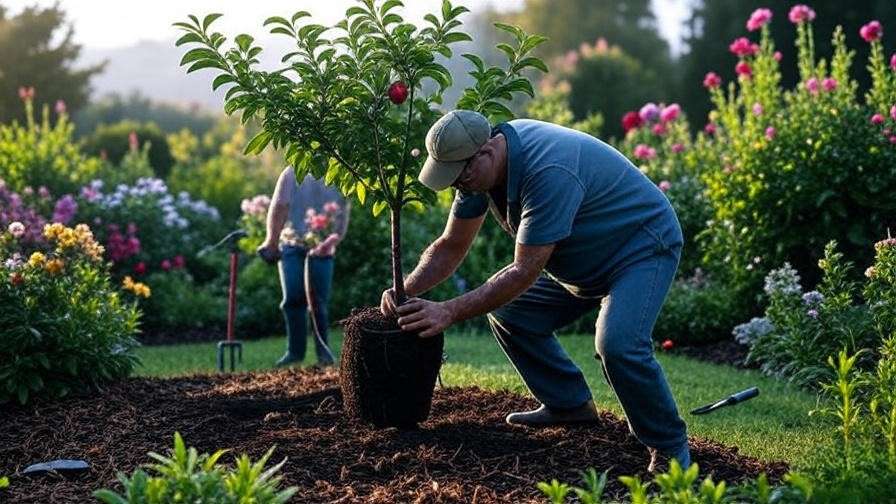
3. Caring for Your Hidden Rose Apple Tree 🌼
Consistent care ensures your tree thrives and produces abundant fruit. Let’s break down the essentials.
3.1. Watering Needs 💧
Young Hidden Rose Apple Trees need regular watering to establish strong roots. Provide 1–2 inches of water weekly, adjusting for rainfall. Use a soaker hose or drip irrigation for deep, even moisture. Mature trees are more drought-tolerant but still benefit from consistent watering during dry spells. Avoid overwatering, as soggy soil can lead to root rot. The University of California’s Agriculture and Natural Resources recommends checking soil moisture 6 inches deep—if it’s dry, it’s time to water.
3.2. Fertilizing for Optimal Growth 🌿
Feed your tree with a balanced fertilizer (e.g., 10-10-10 NPK) or organic compost in early spring, just as buds begin to swell. Apply 1–2 pounds of fertilizer per year of tree age, up to 10 pounds for mature trees. Spread it evenly around the drip line (the area under the canopy’s edge). In mid-summer, a light application of nitrogen-rich fertilizer can boost growth. Dr. Susan Brown, a pomologist at Cornell University, advises against over-fertilizing, as it can lead to excessive foliage at the expense of fruit.
3.3. Pruning and Training ✂️
Pruning shapes the tree, improves air circulation, and boosts fruit quality. Prune in late winter or early spring when the tree is dormant.
- Steps:
- Remove dead, damaged, or crossing branches.
- Thin crowded areas to allow sunlight to reach inner branches.
- Shorten last year’s growth by one-third to encourage fruiting spurs.
- Training: For small spaces, train your tree into an open-center or espalier shape to maximize light exposure. Use clean, sharp pruning shears to prevent disease spread.
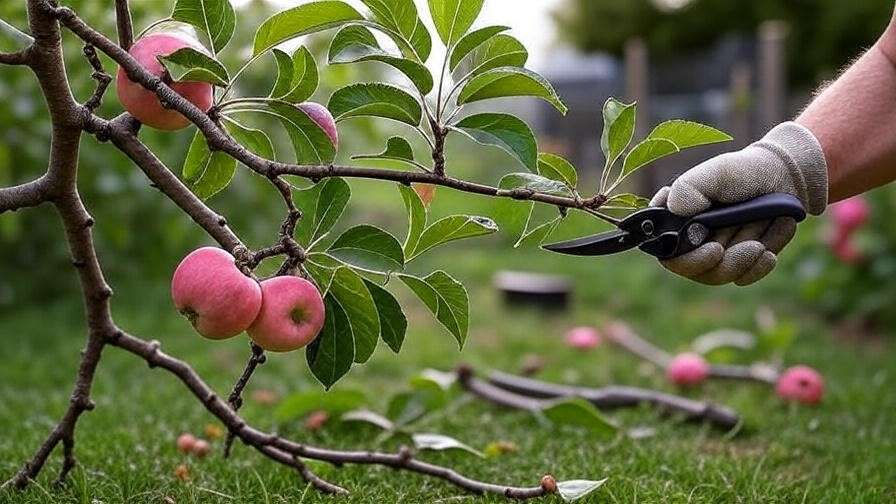
3.4. Pollination Requirements 🐝
The Hidden Rose Apple Tree is not self-pollinating and requires a compatible pollinator, such as Honeycrisp, Fuji, or Gala, planted within 50 feet. Flowering times must overlap (Hidden Rose blooms mid-season). Attract pollinators like bees by planting companion flowers like lavender, marigolds, or clover nearby. For small gardens, hand-pollination with a paintbrush can ensure fruit set. The Xerces Society notes that diverse pollinator habitats can increase fruit yield by up to 20%.

4. Protecting Your Tree from Pests and Diseases 🛡️
Keeping your Hidden Rose Apple Tree healthy requires vigilance against pests and diseases. By combining preventative measures with timely interventions, you can ensure your tree remains productive and vibrant.
4.1. Common Pests 🐛
Several pests can target apple trees, but with the right strategies, you can keep them at bay.
- Apple Maggots: These small flies lay eggs in developing fruit, causing dimpled or discolored apples. Use sticky traps or kaolin clay sprays to deter them.
- Codling Moths: Their larvae burrow into apples, ruining the fruit. Apply organic controls like spinosad or introduce beneficial insects like trichogramma wasps.
- Aphids: These sap-sucking insects weaken young shoots. Spray neem oil or introduce ladybugs, which are natural predators.
Prevention: Regularly inspect your tree, remove fallen fruit, and maintain a clean orchard floor. The University of Minnesota Extension recommends monitoring pest activity from spring through summer to catch infestations early.
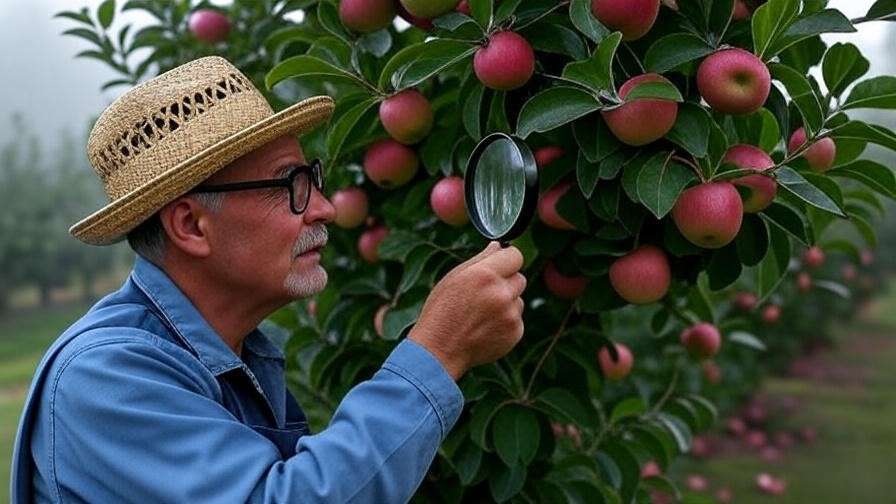
4.2. Common Diseases 🦠
The Hidden Rose Apple Tree is susceptible to a few diseases, but choosing resistant rootstocks and practicing good orchard hygiene can minimize risks.
- Fire Blight: A bacterial disease causing blackened, wilted shoots. Prune affected branches 12 inches below symptoms and sterilize tools between cuts. Apply copper-based sprays in early spring as a preventative measure.
- Powdery Mildew: This fungal disease coats leaves in white powder, reducing photosynthesis. Use sulfur-based fungicides and ensure good air circulation through pruning.
- Apple Scab: Dark, velvety spots on leaves and fruit indicate this fungal issue. Plant resistant rootstocks and apply captan fungicide during wet springs.
Expert Insight: Dr. Robert Crassweller, a fruit tree expert at Penn State University, emphasizes selecting disease-resistant rootstocks like M26 or Geneva series to reduce disease pressure.
4.3. Seasonal Maintenance Checklist 📅
A proactive approach keeps your Hidden Rose thriving year-round:
- Spring: Prune, fertilize, and apply preventative sprays for pests and diseases. Monitor for early signs of fire blight.
- Summer: Water consistently, thin developing fruit to improve size and quality, and check for pests like codling moths.
- Fall/Winter: Harvest apples, clean up fallen leaves and fruit to prevent pest overwintering, and apply mulch to protect roots during dormancy.
5. Harvesting and Enjoying Your Hidden Rose Apples 🍎
The reward for your care is a bountiful harvest of pink-fleshed apples. Here’s how to make the most of it.
5.1. When and How to Harvest ⏰
Hidden Rose apples typically ripen between August and October, depending on your climate. Look for these signs of readiness:
- Vibrant red exterior with a slight sheen.
- Firm fruit that gives slightly when gently squeezed.
- A sweet-tart aroma when sniffed near the stem.
To harvest, gently twist the apple upward until it detaches. Avoid pulling, as this can damage the tree’s fruiting spurs. The Washington State University Extension suggests harvesting in the morning when temperatures are cooler to maintain fruit quality.
5.2. Storing and Preserving Apples 🥫
Proper storage extends the life of your Hidden Rose apples:
- Store in a cool, humid environment (32–40°F, 85–90% humidity), such as a refrigerator or root cellar, for up to 3 months.
- Wrap individual apples in newspaper or store in perforated plastic bags to prevent moisture loss.
- For long-term preservation, try canning, drying, or making cider. A simple recipe for Hidden Rose apple sauce involves simmering peeled apples with a touch of cinnamon and sugar, then canning in sterilized jars.
5.3. Creative Uses for Hidden Rose Apples 🎨
The Hidden Rose’s pink flesh makes it a star in both culinary and decorative applications. Here are some ideas:
- Recipes:
- Hidden Rose Apple Tart: Layer thin slices in a buttery crust for a stunning dessert.
- Pink Apple Chutney: Pair with savory dishes using apples, vinegar, and spices.
- Rosy Smoothie: Blend with berries and yogurt for a vibrant, healthy drink.
- Decorative Uses: Use sliced apples in floral arrangements or as garnishes for cocktails.
- Foodie Appeal: The unique color is perfect for social media-worthy dishes, making it a hit at farmers’ markets or dinner parties.
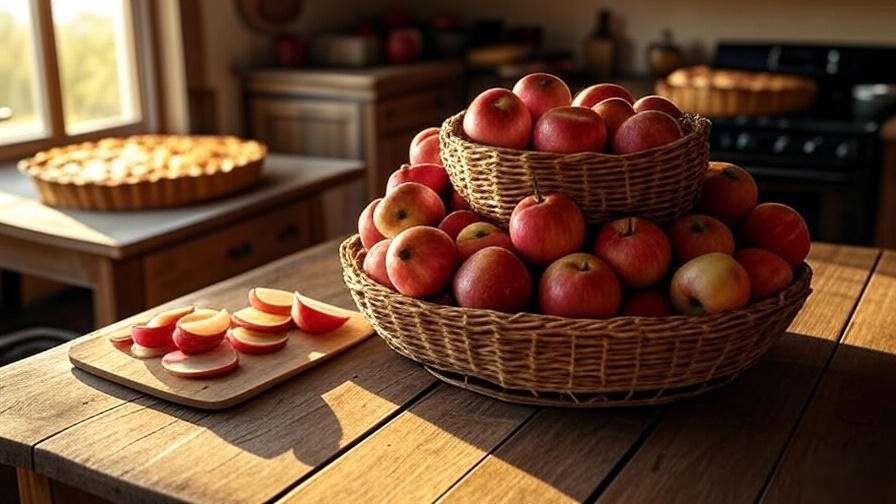
6. Troubleshooting Common Issues 🔧
Even with the best care, challenges can arise. Here’s how to address common problems with your Hidden Rose Apple Tree.
6.1. Why Isn’t My Tree Fruiting? 🤔
If your tree isn’t producing apples, consider these factors:
- Lack of Pollination: Ensure a compatible pollinator tree is nearby or hand-pollinate during bloom season.
- Improper Pruning: Over-pruning can remove fruiting spurs. Focus on thinning cuts to maintain productive branches.
- Nutrient Imbalance: Test soil to check for deficiencies in nitrogen, phosphorus, or potassium, and adjust fertilization accordingly.
Solution: Consult your local agricultural extension for a soil test and pollination advice tailored to your region.
6.2. Dealing with Environmental Stress 🌦️
Environmental factors can impact tree health:
- Drought: Mulch heavily and water deeply during dry spells.
- Frost: Protect young trees with frost blankets during late spring freezes.
- Heatwaves: Use shade cloths to shield young trees and maintain consistent irrigation.
The National Gardening Association recommends monitoring weather forecasts to anticipate and mitigate stress.
6.3. Expert Tips for Long-Term Success 💡
- Soil Testing: Conduct annual soil tests to monitor pH and nutrient levels.
- Companion Planting: Grow chives or nasturtiums to deter pests naturally.
- Record-Keeping: Track pruning, fertilization, and pest activity to identify patterns and improve care.
Case Study: A home gardener in Oregon transformed their backyard into a thriving Hidden Rose orchard by combining dwarf trees with pollinator-friendly plants, yielding 50 pounds of fruit annually within 5 years.
7. FAQs About Hidden Rose Apple Trees ❓
Here are answers to common questions, inspired by Google’s “People Also Ask” data:
- Q1: How long does it take for a Hidden Rose Apple Tree to bear fruit?
- A: Typically 2–5 years, depending on tree age, rootstock, and care practices. Dwarf trees may fruit sooner.
- Q2: Can I grow a Hidden Rose Apple Tree in a container?
- A: Yes, dwarf varieties thrive in large containers (20–25 gallons) with well-drained soil and regular care.
- Q3: What are the best companion plants for Hidden Rose Apple Trees?
- A: Marigolds, lavender, and chives attract pollinators and deter pests.
- Q4: How do I know if my tree is getting enough sunlight?
- A: Look for vigorous growth and dark green leaves. If growth is sparse, consider reflective mulch to boost light exposure.
- Q5: Are Hidden Rose apples good for baking?
- A: Absolutely! Their sweet-tart flavor and firm texture make them ideal for pies, tarts, and sauces.
- Q6: How do I prevent apple scab on my Hidden Rose tree?
- A: Choose resistant rootstocks, ensure good air circulation, and apply fungicides during wet seasons.
- Q7: Can I grow Hidden Rose apples in warmer climates?
- A: Yes, in USDA zones 7–8, but provide extra shade and water during hot summers.
8. Conclusion: Your Journey to a Thriving Hidden Rose Apple Tree 🌟
Growing a Hidden Rose Apple Tree is a rewarding journey that combines beauty, flavor, and sustainability. By following this guide—covering planting, care, pest management, and harvesting—you’re equipped to cultivate a healthy tree that produces stunning pink-fleshed apples for years to come. Start with the right location and tree, nurture it with consistent care, and troubleshoot challenges with confidence. For personalized advice, connect with your local agricultural extension or join online gardening communities. Share your Hidden Rose success stories in the comments, and explore our related articles on fruit tree care to keep your orchard thriving! 🌳🍎

